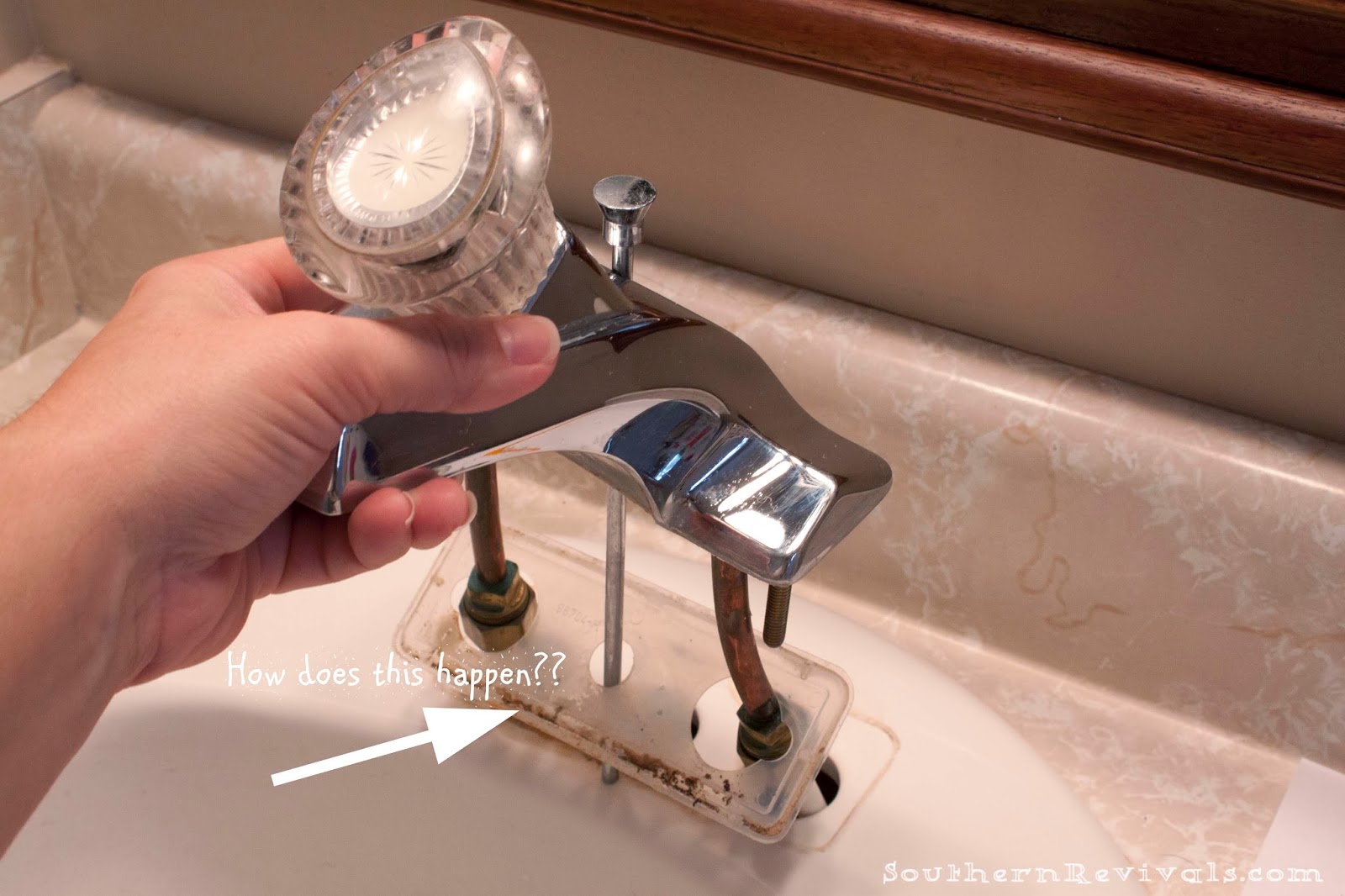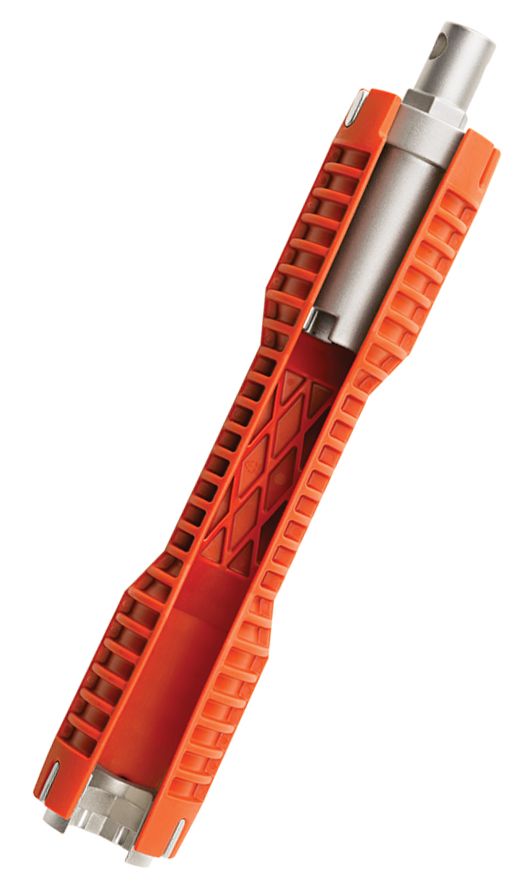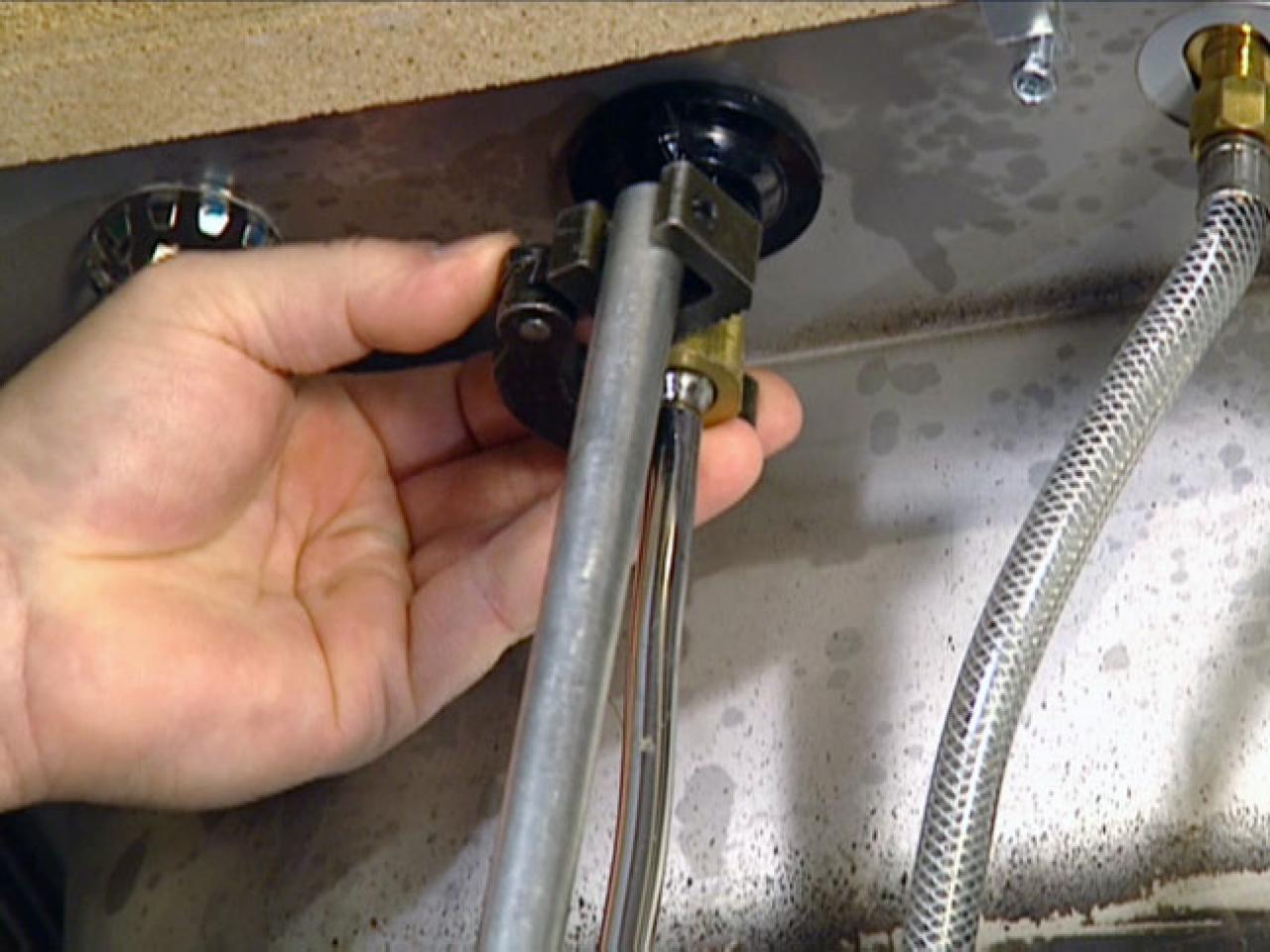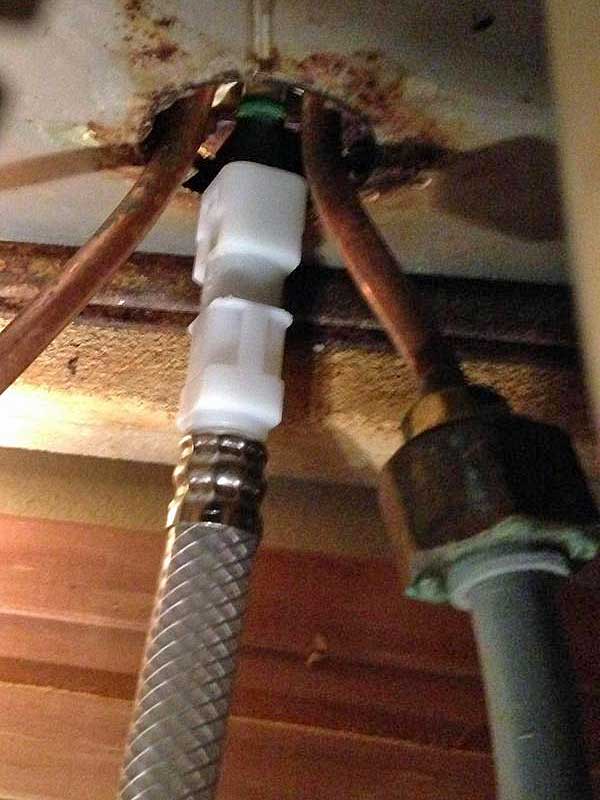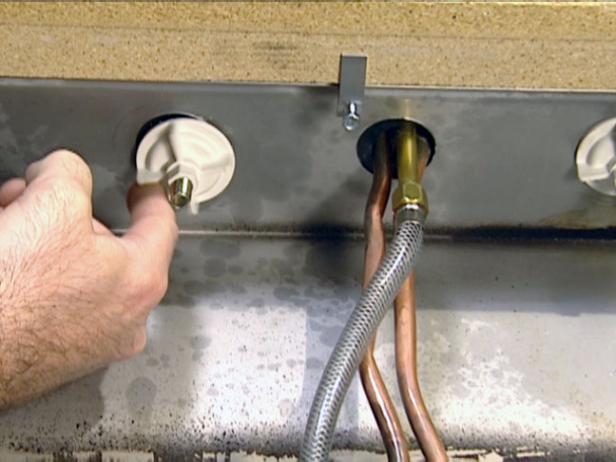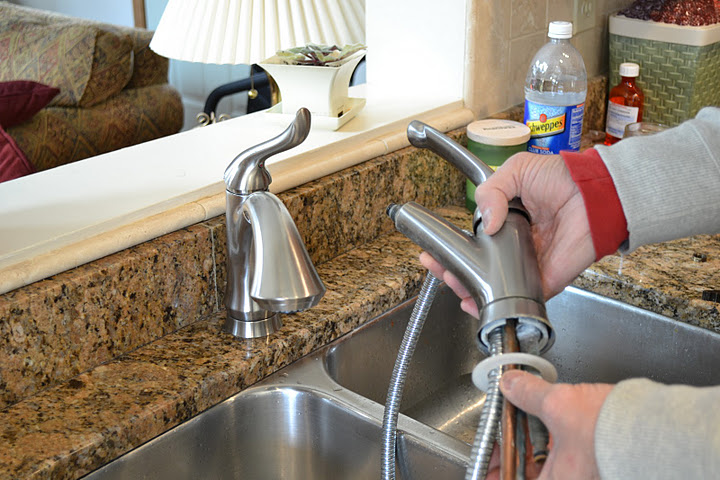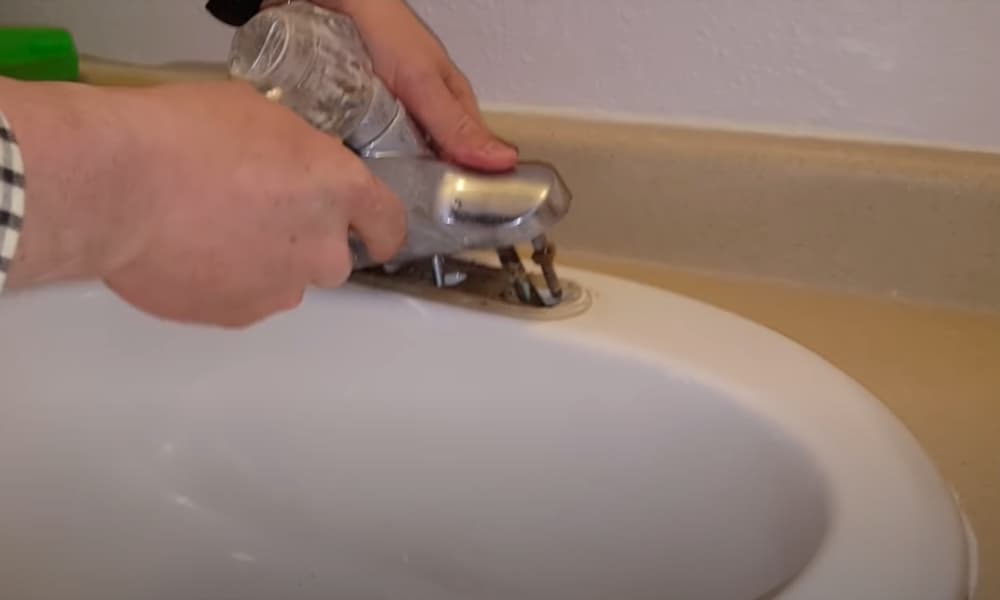Before you begin the installation process, it's important to gather all the necessary tools. You'll need a basin wrench, adjustable wrench, pipe wrench, screwdriver, plumber's putty, Teflon tape, and a bucket or towel to catch any water that may leak during the installation. Start by turning off the water supply to your sink. This can typically be done by turning off the shut-off valves located under the sink. Then, turn on the faucet to release any remaining water in the pipes.How to Install a Kitchen Sink Faucet
Now that you have all your tools and the water supply is turned off, you can begin the installation process.Step-by-Step Guide for Installing a Kitchen Sink Faucet
Installing a new kitchen sink faucet yourself can save you money on hiring a professional. However, it's important to have some basic plumbing knowledge and the right tools before attempting this project. If you're unsure about any step of the installation process, it's best to consult a professional to avoid any potential damage or safety hazards.DIY Kitchen Sink Faucet Installation
Having the right tools is crucial for a successful kitchen sink faucet installation. In addition to the tools mentioned in the step-by-step guide, you may also need a hacksaw, pipe cutter, and a metal file to remove any excess pipe length or smooth out rough edges.Tools Needed for Installing a Kitchen Sink Faucet
Tip 1: Before you begin the installation process, make sure you have the correct faucet size and type for your sink. Measure the distance between the mounting holes and choose a faucet that will fit properly. Tip 2: When removing the old faucet, take note of how the parts are assembled so you can easily put them back together if needed. Tip 3: Use Teflon tape on all threaded connections for a tight seal and to prevent leaks. Tip 4: If you're installing a faucet with a sprayer, make sure the sprayer hose is properly connected and secure before turning on the water supply.Tips for Installing a Kitchen Sink Faucet
Mistake 1: Not turning off the water supply before beginning the installation process. This can lead to a messy and potentially damaging situation. Mistake 2: Not using plumber's putty or Teflon tape. This can result in leaks and a faulty seal. Mistake 3: Over-tightening connections. This can damage the faucet and cause leaks. Mistake 4: Not checking for leaks after the installation is complete. It's important to thoroughly check for any leaks and fix them before using the faucet regularly.Common Mistakes to Avoid When Installing a Kitchen Sink Faucet
When selecting a new kitchen sink faucet, consider the style and finish that will best complement your kitchen design. You may also want to choose a faucet with features such as a pull-down sprayer or touchless technology for added convenience.Choosing the Right Kitchen Sink Faucet for Your Home
If you're installing a kitchen sink faucet with a sprayer, the process will be similar to a standard faucet installation. The main difference is connecting the sprayer hose to the faucet and securing it in place.Installing a Kitchen Sink Faucet with a Sprayer
If you're replacing an old kitchen sink faucet, it's important to properly remove the old faucet and clean the area before installing the new one. This will ensure a good seal and prevent any potential issues with the new faucet.Replacing an Old Kitchen Sink Faucet
While installing a kitchen sink faucet yourself can save you money, it's important to consider your own plumbing knowledge and the complexity of the installation process. If you're unsure about any step, it's best to hire a professional to ensure a successful and safe installation. With the right tools and knowledge, installing a new kitchen sink faucet can be a relatively simple and rewarding DIY project. Follow these tips and steps for a successful installation and enjoy your newly upgraded kitchen sink faucet! Professional vs. DIY Kitchen Sink Faucet Installation
How to Install a Kitchen Sink Faucet: A Step-by-Step Guide

Choosing the Right Faucet
 Before you can begin installing your new kitchen sink faucet, you need to choose the right one for your needs. There are a variety of styles and finishes to choose from, so it's important to consider the overall design of your kitchen. Do you want a modern, sleek look or a more traditional design? What type of finish will complement your existing kitchen fixtures? Take some time to research and compare different options to find the perfect faucet for your kitchen.
Before you can begin installing your new kitchen sink faucet, you need to choose the right one for your needs. There are a variety of styles and finishes to choose from, so it's important to consider the overall design of your kitchen. Do you want a modern, sleek look or a more traditional design? What type of finish will complement your existing kitchen fixtures? Take some time to research and compare different options to find the perfect faucet for your kitchen.
Gathering Tools and Materials
 Once you have chosen your faucet, it's time to gather the necessary tools and materials for installation. You will need a basin wrench, adjustable wrench, plumber's putty, Teflon tape, and a bucket or towel to catch any water that may spill during the process. Make sure to also read the manufacturer's instructions for any specific tools or materials that may be needed for your particular faucet.
Once you have chosen your faucet, it's time to gather the necessary tools and materials for installation. You will need a basin wrench, adjustable wrench, plumber's putty, Teflon tape, and a bucket or towel to catch any water that may spill during the process. Make sure to also read the manufacturer's instructions for any specific tools or materials that may be needed for your particular faucet.
Shutting Off the Water Supply
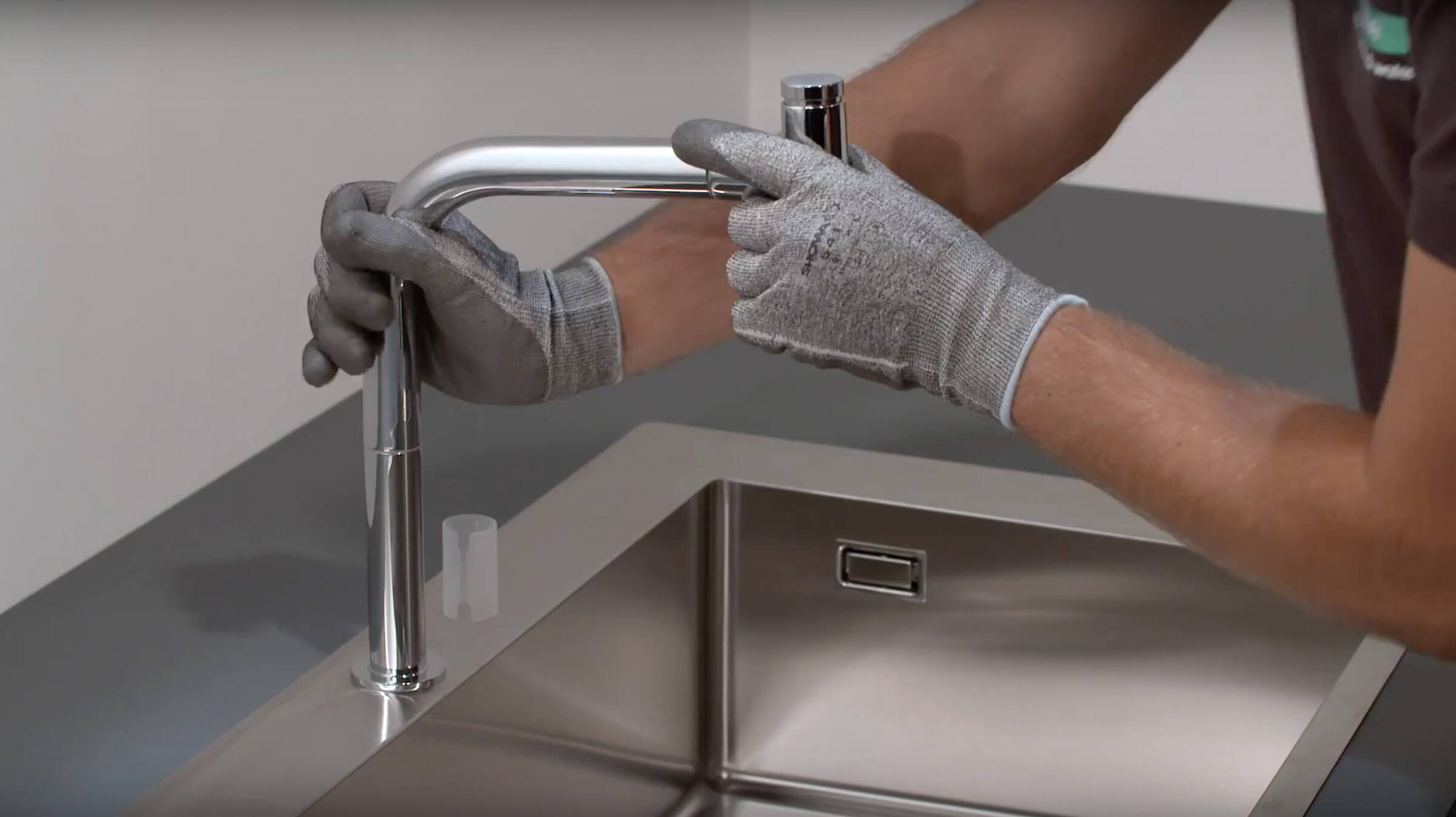 Before you begin any installation, it's important to turn off the water supply to your kitchen sink. This can usually be done by turning off the shut-off valves located under the sink. If there are no shut-off valves, you will need to turn off the main water supply to your house. This step is crucial to prevent any water damage or leaks during the installation process.
Before you begin any installation, it's important to turn off the water supply to your kitchen sink. This can usually be done by turning off the shut-off valves located under the sink. If there are no shut-off valves, you will need to turn off the main water supply to your house. This step is crucial to prevent any water damage or leaks during the installation process.
Removing the Old Faucet
 Now that you have everything you need and the water supply is shut off, you can begin removing the old faucet. Start by disconnecting any water supply lines and removing the mounting nuts that hold the faucet in place. Once the faucet is loose, you can lift it out and remove any remaining putty or adhesive from the sink.
Now that you have everything you need and the water supply is shut off, you can begin removing the old faucet. Start by disconnecting any water supply lines and removing the mounting nuts that hold the faucet in place. Once the faucet is loose, you can lift it out and remove any remaining putty or adhesive from the sink.
Installing the New Faucet
 With the old faucet removed, it's time to install the new one. Begin by placing a small amount of plumber's putty around the base of the faucet. This will help create a watertight seal when the faucet is installed. Next, insert the faucet into the mounting holes on the sink and secure it in place with the mounting nuts provided. Be sure to follow the manufacturer's instructions for securing the faucet correctly.
With the old faucet removed, it's time to install the new one. Begin by placing a small amount of plumber's putty around the base of the faucet. This will help create a watertight seal when the faucet is installed. Next, insert the faucet into the mounting holes on the sink and secure it in place with the mounting nuts provided. Be sure to follow the manufacturer's instructions for securing the faucet correctly.
Connecting Water Supply Lines
 Once the faucet is securely in place, you can connect the water supply lines. Apply Teflon tape to the threads of the supply lines to create a tight seal. Then, use the basin wrench to tighten the supply lines onto the corresponding valves. Make sure they are secure and not leaking before moving on to the next step.
Once the faucet is securely in place, you can connect the water supply lines. Apply Teflon tape to the threads of the supply lines to create a tight seal. Then, use the basin wrench to tighten the supply lines onto the corresponding valves. Make sure they are secure and not leaking before moving on to the next step.
Turn the Water Supply Back On
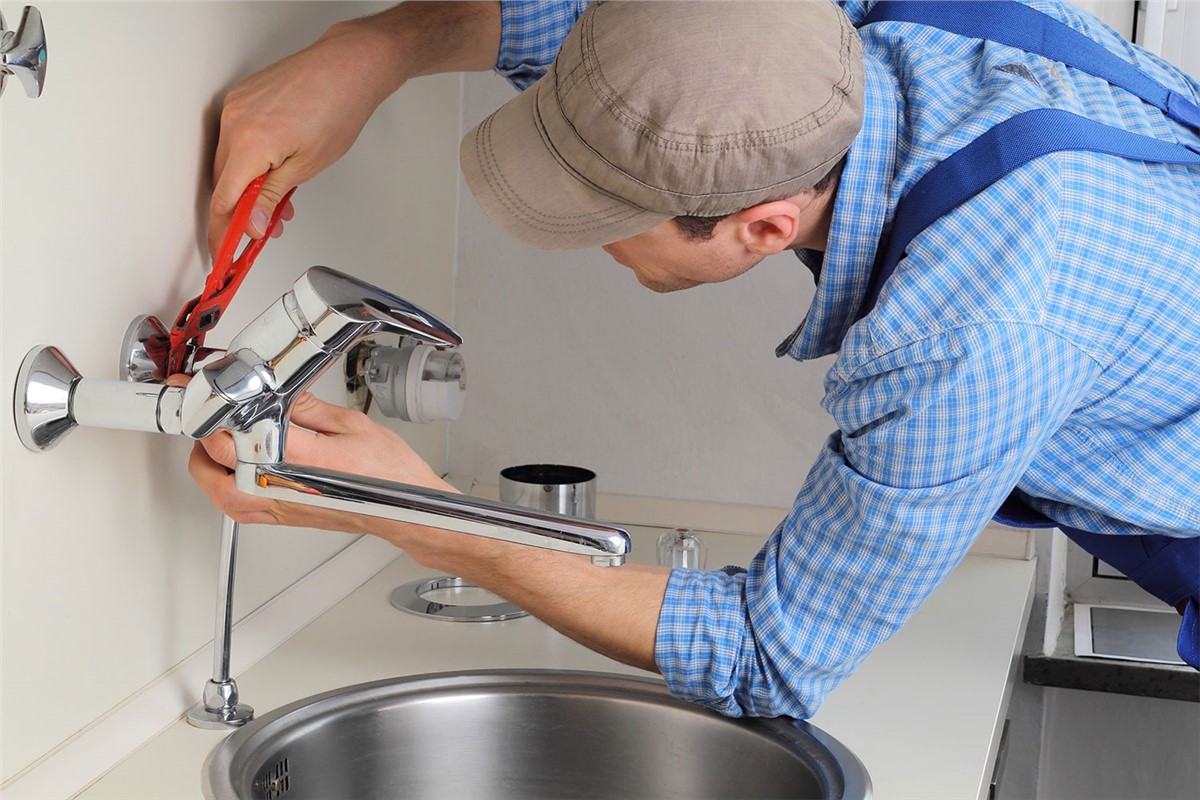 Now that the faucet is installed and water supply lines are connected, you can turn the water supply back on. Check for any leaks and tighten any connections if necessary. Let the water run for a few minutes to ensure everything is working correctly.
Installing a new kitchen sink faucet
may seem like a daunting task, but with the right tools and knowledge, it can be a simple and rewarding DIY project. By following these steps and taking your time, you can have a beautiful and functional faucet in your kitchen in no time. Remember to always consult the manufacturer's instructions and
hire a professional
if you encounter any difficulties. With your new faucet installed, you can now enjoy a fresh and updated look in your kitchen.
Now that the faucet is installed and water supply lines are connected, you can turn the water supply back on. Check for any leaks and tighten any connections if necessary. Let the water run for a few minutes to ensure everything is working correctly.
Installing a new kitchen sink faucet
may seem like a daunting task, but with the right tools and knowledge, it can be a simple and rewarding DIY project. By following these steps and taking your time, you can have a beautiful and functional faucet in your kitchen in no time. Remember to always consult the manufacturer's instructions and
hire a professional
if you encounter any difficulties. With your new faucet installed, you can now enjoy a fresh and updated look in your kitchen.












:no_upscale()/cdn.vox-cdn.com/uploads/chorus_asset/file/19495086/drain_0.jpg)



